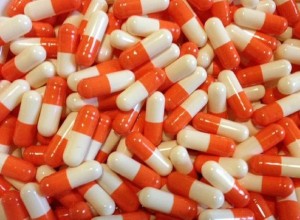Introduction
If your child has a bacterial infection, their doctor may prescribe amoxicillin. This drug is a prescription antibiotic that’s used to treat a range of infections caused by bacteria. We’ll cover dosage for amoxicillin in children and discuss the importance of following the dosage instructions from your child’s doctor. We’ll also describe side effects and warnings for amoxicillin. This information can help you give your child amoxicillin safely.
Amoxicillin dosage for kids
When your child’s doctor prescribes amoxicillin for your child, they will tell you the dosage they recommend. The doctor will decide this dosage based on many factors, including your child’s age and weight, the type of infection they’re treating, and other factors. Each patient is different, so this dosage will be specific to your child. Be sure to give your child the exact dosage their doctor prescribes for them. This is important for all prescription drugs, but it’s especially important for antibiotics, including amoxicillin. If used incorrectly, an antibiotic may not treat your child’s infection completely. This could make the infection get worse or even come back again later. The bacteria could also develop resistance to the drug, which means that the antibiotic may not work to treat the infection anymore. To help prevent these problems, be sure to give your child the entire course of treatment as prescribed by your child’s doctor. This means you should keep giving your child the amoxicillin until all of it is gone. You should do this even if your child starts feeling better before they’ve taken all of the medication. Doing this gives you the best chance of treating your child’s infection successfully.

Overdose warnings
Taking too much amoxicillin can cause dangerous effects in your child. These effects include kidney damage or kidney failure. The risk of these effects is another reason why you should follow the doctor’s dosage instructions exactly as prescribed. If you think your child has taken too much amoxicillin, call your child’s doctor or your local poison control center right away. If your child’s symptoms are severe, go to the nearest emergency room. Symptoms of overdose can include:
nausea
vomiting
diarrhea
pain in your child’s lower back
Side effects
Like most drugs, amoxicillin has side effects, as well as warnings. If you have any questions about the effects of this drug, ask your child’s doctor or your pharmacist. The more common side effects of amoxicillin can include:
nausea
vomiting
diarrhea
Amoxicillin can also cause serious side effects. If your child has any of these side effects, call your child’s doctor right away. If your child’s symptoms are severe, call 9-1-1 or go to the nearest emergency room. Serious side effects of amoxicillin can include:
Watery and bloody stools, with or without stomach cramps. This can occur up to two months after taking the last dose of this drug.
Severe allergic reaction, with symptoms such as swelling of the tongue and throat, trouble breathing, and swelling of the hands, feet, and other body parts
Severe skin rash
Yellowing of your child’s skin and the whites of their eyes. This can be a sign of liver problems.
Brown, yellow, or gray staining of your child’s teeth
Unusual bleeding and bruising
Drug interactions
Before your child starts taking amoxicillin, tell their doctor about any medications, vitamins, or herbs your child is taking. Be sure to include over-the-counter medications. Some of these substances may interact with amoxicillin. An interaction is an effect that can be harmful or keep the drug from working well. Examples of drugs that can interact with amoxicillin include:
probenecid
other antibiotics such as doxycycline and minocycline
certain types of hormonal birth control
Conditions of concern
If your child has certain health conditions, amoxicillin may not be the best option for them. Tell your child’s doctor if your child has any conditions that may cause health problems with the use of amoxicillin. Examples of these conditions include:
history of allergic reaction to amoxicillin or any type of penicillin
kidney disease
More about amoxicillin
Amoxicillin stops the growth of certain types of bacteria. It’s used to treat a range of bacterial infections, including infections of the:
ear
nose
throat
skin
urinary tract
Like all antibiotics, amoxicillin must only be used for bacterial infections. Amoxicillin will not treat infections caused by viruses, such as the common cold. Amoxicillin is available as a generic drug. It comes as a capsule, tablet, chewable tablet, and powder for liquid suspension. All forms are taken by mouth.
Talk with your doctor
If your child’s doctor has prescribed amoxicillin, follow their instructions carefully. Give your child the exact dosage the doctor prescribes. Following your doctor’s instructions can help make sure your child’s treatment with amoxicillin is as effective
Post time: Jun-16-2023




